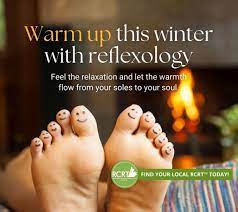What Is Reflexology and How Does It Work?
In today’s fast-paced world, more people are turning to natural, non-invasive therapies to manage stress, chronic pain, and various health concerns. One such practice gaining popularity is reflexology—an ancient technique rooted in the belief that certain points on the feet, hands, and ears correspond to organs and systems in the body. But what exactly is reflexology, how does it work, and can it really promote healing and relaxation? This in-depth guide explores the fascinating world of reflexology, its techniques, benefits, and science.
Understanding Reflexology: An Ancient Healing Art
Reflexology is a form of complementary therapy that involves applying specific pressure to reflex points located primarily on the feet, but also on the hands and ears. These reflex points are believed to correspond with various parts of the body. When stimulated, they can encourage healing and promote overall well-being.
The basic concept of reflexology is that the body is mapped onto the feet and hands. For example:
-
The tips of the toes represent the head and brain.
-
The arch of the foot reflects internal organs like the stomach and liver.
-
The heel connects to the lower back and intestines.
While reflexology shares some similarities with massage therapy, it is fundamentally different. Massage focuses on the muscles and soft tissues, while reflexology targets energy pathways and nerve endings.
Origins of Reflexology: A Glimpse Into History
Reflexology has ancient roots that stretch across cultures and continents:
-
Egyptian murals dating back to 2330 B.C. show practitioners working on hands and feet.
-
Traditional Chinese medicine (TCM) has long believed in energy channels (meridians) connecting various organs to specific points on the feet.
-
Native American tribes used foot therapy as a form of healing and spiritual practice.
The modern form of reflexology began in the early 20th century:
-
Dr. William Fitzgerald, an American ear, nose, and throat specialist, introduced “zone therapy,” dividing the body into 10 longitudinal zones.
-
Eunice Ingham, a physiotherapist in the 1930s, further developed the technique by mapping out reflex points on the feet and hands that mirrored the body’s organs. Her work became the foundation of modern reflexology as practiced today.
How Reflexology Works: The Theories Behind the Practice
While reflexology is not universally accepted in conventional medicine, several theories attempt to explain how it may work:
1. Zone Theory
This theory divides the body into ten vertical zones (five on each side). Each zone corresponds to fingers and toes, and everything within that zone is connected. Stimulating a point in a particular zone is believed to affect the entire area.
2. Nerve Pathways
Reflexologists believe that stimulating specific points on the feet or hands sends signals through the nervous system to corresponding body parts. This may help release tension, improve blood flow, and support the body’s natural healing.
3. Energy Flow (Qi)
Rooted in traditional Chinese medicine, this theory proposes that qi (chi) or life energy flows through the body. Blocked energy pathways can lead to illness. Reflexology is said to clear these blockages, restoring balance and vitality.
4. Gate Control Theory of Pain
Some scientists suggest that applying pressure to reflex points can “close the gates” to pain signals in the nervous system, similar to how rubbing a sore muscle can relieve pain.
What to Expect During a Reflexology Session
If you’ve never experienced reflexology before, here’s what you can expect during a typical session:
1. Initial Consultation
The reflexologist may ask about your health history, stress levels, medications, and specific concerns you wish to address.
2. Preparation
You’ll remain fully clothed, removing only shoes and socks. You’ll lie comfortably on a reclining chair or massage table.
3. The Session
The practitioner begins by warming up the feet with gentle rubbing or stretching. Then, they use their thumbs and fingers to apply pressure to various reflex points. The pressure may be firm, but should not cause pain. Some areas may feel tender—this is often interpreted as an area needing attention.
4. Duration
A full session usually lasts 30 to 60 minutes. You may feel deeply relaxed, fall asleep, or become emotional as tension is released.
5. Aftercare
Some people experience mild side effects such as increased urination, emotional release, or fatigue. These are typically short-lived and considered signs that the body is rebalancing.
Key Benefits of Reflexology
Many people turn to reflexology to manage a wide range of physical and emotional conditions. Here are some of the most commonly reported benefits:
1. Reduces Stress and Anxiety
Reflexology induces deep relaxation, helping reduce cortisol levels and calming the nervous system. It may help people feel more centered and less overwhelmed.
2. Improves Circulation
The pressure applied during reflexology can stimulate blood flow, allowing more oxygen and nutrients to reach cells and tissues.
3. Eases Pain
Reflexology may be effective for managing chronic pain, including:
-
Migraines
-
Back pain
-
Menstrual cramps
-
Arthritis
-
Fibromyalgia
4. Boosts Immune Function
By reducing stress and improving circulation, reflexology supports the immune system’s ability to fight off illness.
5. Promotes Better Sleep
Many people report better sleep after reflexology sessions due to its relaxing effects and hormonal balancing.
6. Supports Digestive Health
Certain reflex points correspond to the stomach, intestines, and liver. Stimulating these areas may relieve bloating, constipation, and indigestion.
7. Improves Hormonal Balance
Reflexology is often used to support reproductive health, alleviate PMS symptoms, and assist with menopause-related concerns.
Scientific Evidence: What Does the Research Say?
While reflexology has many fans, scientific support is mixed. Some studies suggest it offers measurable benefits, while others argue that the results may be due to the placebo effect or general relaxation.
Here’s what some research indicates:
-
A 2015 study published in the Journal of Obstetrics and Gynaecology found that reflexology helped reduce menstrual pain and PMS symptoms.
-
A 2018 study in the Iranian Journal of Nursing and Midwifery Research showed that reflexology reduced anxiety in patients before surgery.
-
A meta-analysis in Complementary Therapies in Clinical Practice found moderate evidence that reflexology may reduce fatigue and improve quality of life in cancer patients.
While more rigorous studies are needed, the anecdotal and observational evidence suggests that reflexology is safe and beneficial for many people when used as a complementary therapy.
Reflexology vs. Massage Therapy: What’s the Difference?
It’s easy to confuse reflexology with massage, but they differ in purpose and technique:
| Feature | Reflexology | Massage Therapy |
|---|---|---|
| Focus Area | Feet, hands, ears | Whole body (muscles, tissues) |
| Goal | Stimulate reflex points | Relieve muscle tension |
| Tools Used | Fingers, thumbs only | Hands, elbows, oils, tools |
| Pressure | Firm but targeted | Varies (light to deep tissue) |
| Clothing | Fully clothed (feet/hands exposed) | Partially unclothed |
| Basis | Reflex points and energy zones | Muscle anatomy and circulation |
Who Can Benefit from Reflexology?
Reflexology may benefit people of all ages and lifestyles, including those who:
-
Live with chronic stress or anxiety
-
Struggle with poor sleep
-
Have digestive issues
-
Experience hormonal imbalances
-
Are you recovering from surgery or illness
-
Want to enhance their general wellness
It’s often used in:
-
Cancer care centers
-
Fertility clinics
-
Elderly care homes
-
Palliative care settings
Are There Any Risks or Side Effects?
Reflexology is generally safe for most people, especially when performed by a certified practitioner. However, there are some contraindications:
Avoid or consult a doctor if you:
-
Are pregnant (especially in the first trimester)
-
Have foot fractures, wounds, or infections
-
Suffer from blood clots or circulatory issues
-
Have severe osteoporosis
-
Are you experiencing fever or infection
Mild side effects may include:
-
Lightheadedness
-
Fatigue
-
Emotional release
-
Increased urination
These symptoms usually pass within a day or two.
How to Find a Qualified Reflexologist
To ensure safety and effectiveness, always seek treatment from a trained and certified reflexologist. Here are some tips:
-
Check for certification through reputable organizations like:
-
The American Reflexology Certification Board (ARCB)
-
International Institute of Reflexology (IIR)
-
-
Read reviews and testimonials
-
Ask about their training, specialties, and experience
-
Discuss your medical conditions or concerns before starting
Reflexology at Home: Can You Do It Yourself?
Yes! You can perform basic reflexology techniques at home with some guidance. Here’s a simple relaxation method:
DIY Foot Reflexology for Stress Relief:
-
Wash and dry your feet thoroughly.
-
Sit in a comfortable position and rest one foot over your opposite thigh.
-
Use your thumbs to apply circular pressure to the center of your foot (solar plexus point).
-
Press along the arch, moving from the ball of the foot down to the heel.
-
Focus on tender areas for a few seconds longer.
-
Switch to the other foot and repeat.
You can also use tools like foot rollers or reflexology socks that show pressure point maps.
Final Thoughts: Is Reflexology Right for You?
Reflexology is more than just a foot rub—it’s a deeply relaxing and potentially healing therapy that taps into the body’s innate wisdom. Whether you’re dealing with stress, fatigue, pain, or simply looking to unwind, reflexology can be a valuable part of your wellness journey.
While it may not cure diseases, many people find it an effective way to enhance their physical, mental, and emotional health, especially when used alongside conventional treatments.
Before starting, consult with your doctor if you have any serious medical conditions. And if you're curious, try a session—you might just walk away feeling better than ever.



.jpg)



.jpg)



.jpeg)
0 Comments